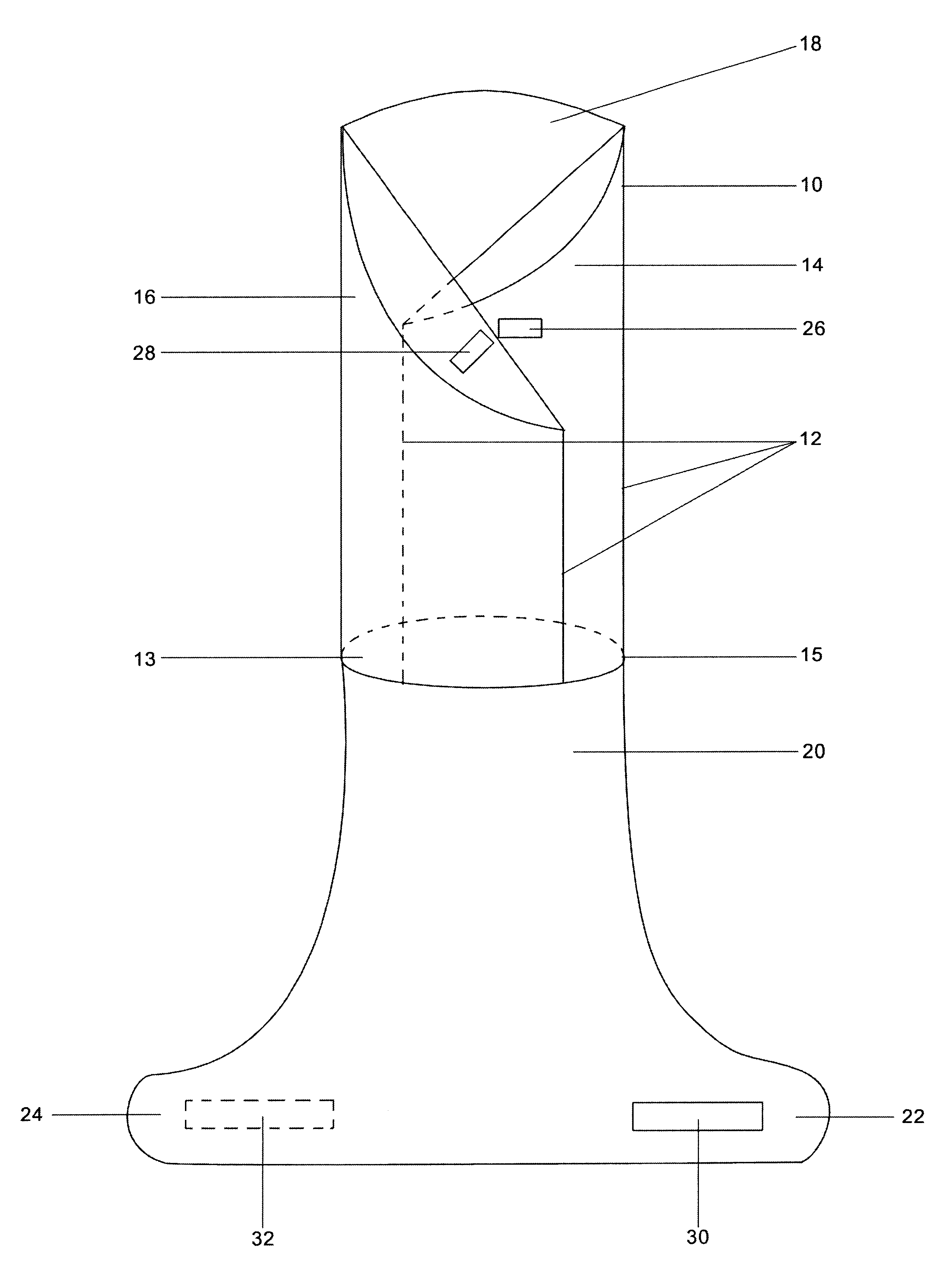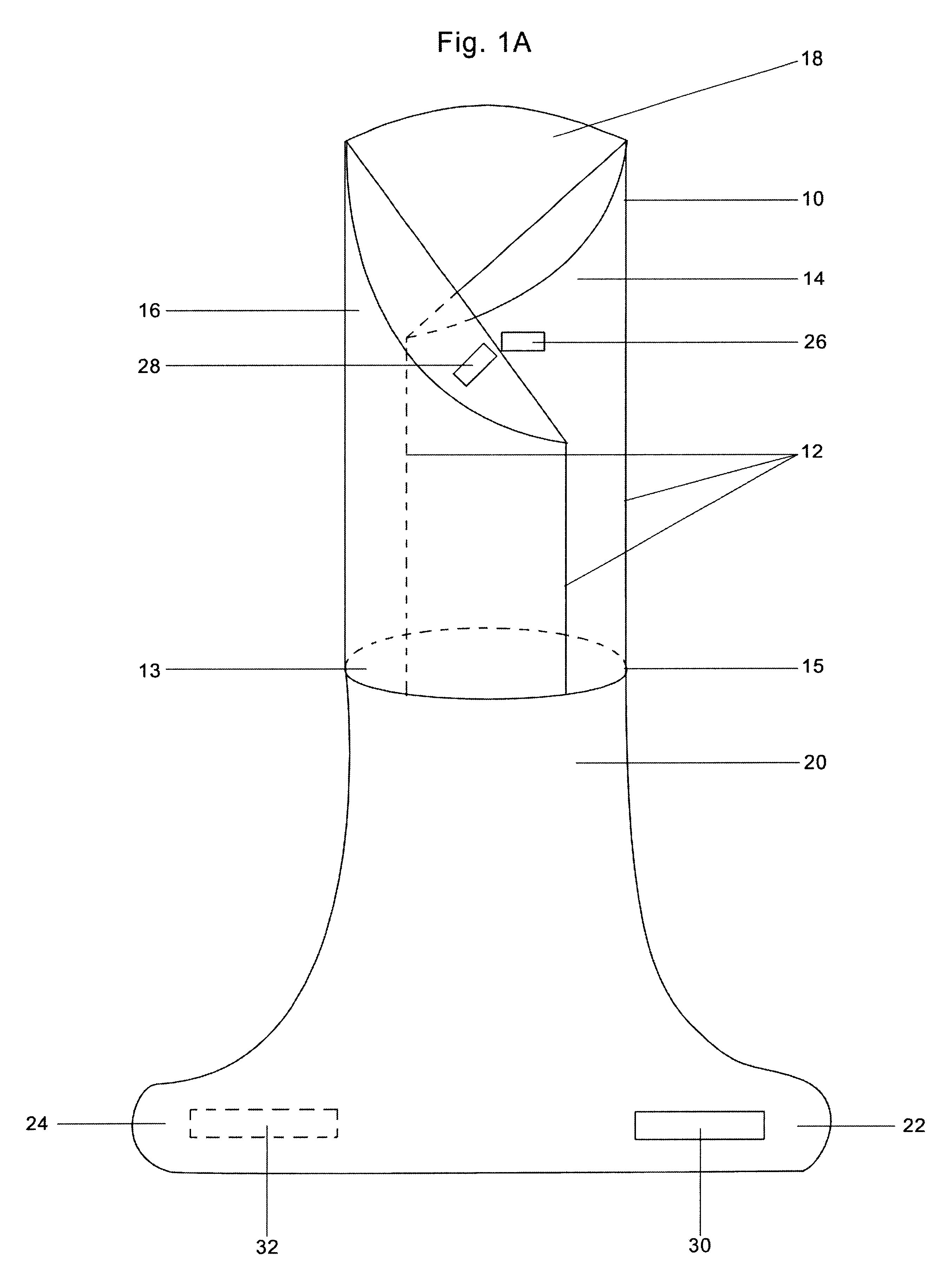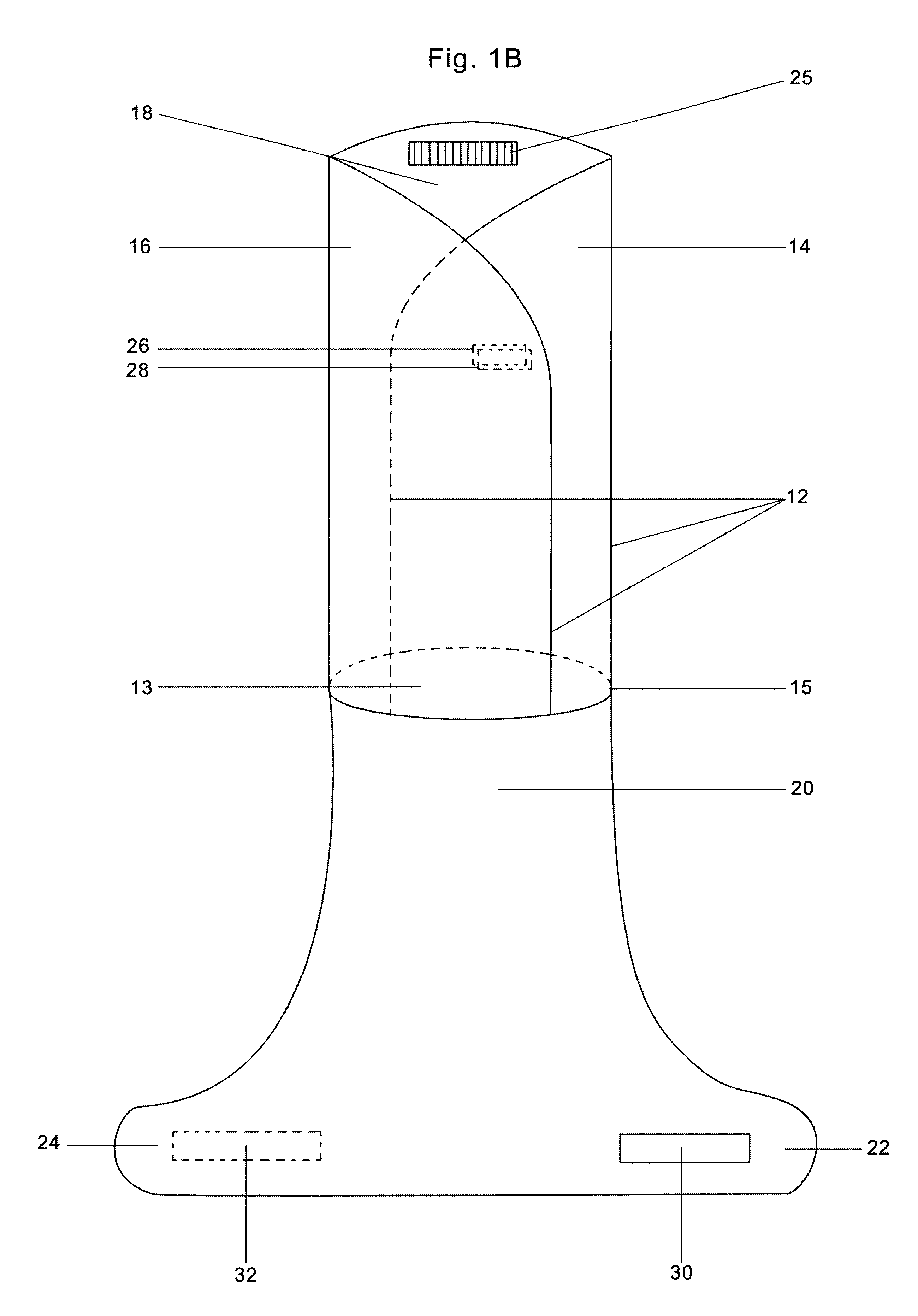Infant sleeping and receiving blanket
a blanket and infant technology, applied in the field of blankets, can solve the problems of waste of material, square blankets that cannot protect infants, and traditional square blankets that cannot stay secure to infants
- Summary
- Abstract
- Description
- Claims
- Application Information
AI Technical Summary
Benefits of technology
Problems solved by technology
Method used
Image
Examples
Embodiment Construction
A preferred embodiment of the blanket of the present invention is illustrated in FIG. 1A which is shown in its unwrapped or fully opened position. Blanket 10 can be considered as comprising generally of a securing compartment 12, which comprises a sheet of fabric of predetermined shape, folded vertically into three sections, sewn together at base 15 and sewn to gusset 13. Securing compartment 12 is made up of right-hand side 14, left-hand side 16, and central area 18. Securing compartment 12 and gusset 13, when sewn together, create a three dimensional blanket.
Right-hand side 14 and left-hand side 16 may further have mating hook and loop fasteners, that when joined, provide a secure attachment. The infant is secure inside securing compartment 12 by the joining of right hook and loop fastener 26 to left hook and fastener 28. Right-hand side 14 and left-hand side 16 may contain no hook and loop fasteners or more than one set of fasteners depending on the size of the infant. Attached t...
PUM
 Login to View More
Login to View More Abstract
Description
Claims
Application Information
 Login to View More
Login to View More - R&D
- Intellectual Property
- Life Sciences
- Materials
- Tech Scout
- Unparalleled Data Quality
- Higher Quality Content
- 60% Fewer Hallucinations
Browse by: Latest US Patents, China's latest patents, Technical Efficacy Thesaurus, Application Domain, Technology Topic, Popular Technical Reports.
© 2025 PatSnap. All rights reserved.Legal|Privacy policy|Modern Slavery Act Transparency Statement|Sitemap|About US| Contact US: help@patsnap.com



